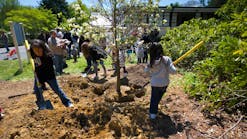North Carolina receives over $6 million in funding for environmental improvements
The North Carolina Department of Environmental Quality’s Division of Coastal Management awarded 20 grants to 19 communities for Phase 3 and 4 of the Resilient Coastal Communities Program (RCCP).
The funding totals more than $ 6 million for engineering, design and implementation of resilience projects.
The main objective of Phase 3 of the RCCP is to provide funding to assist communities with the engineering and design of prioritized projects identified in their RCCP Resilience Strategy or other existing plans that meet the RCCP’s Phase 1 and 2 planning criteria.
Additionally, some communities will receive funds to develop or amend ordinances to enhance their resilience to coastal hazards.
A total of $4,310,350 will be available to complete 15 projects in Phase 3. Most of these engineering and design projects incorporate natural and nature-based elements, such as wetland restoration and living shoreline design.
Specific projects for Phase 3 include living shoreline construction to reduce erosion along public shorelines, updating development ordinances to align with resilience strategies, and comprehensive stormwater action plans with detailed drainage studies and easement acquisitions.
Phase 4 of the RCCP aims to fund the implementation of projects previously awarded funding for Phases 1-3.
These projects consist of strategic initiatives to enhance coastal resilience.
A total of $1,900,951 will be available to complete 5 projects in Phase 4. These projects feature a range of nature-based solutions, infrastructure improvements and community focused strategies to manage stormwater and mitigate flooding.
Specific projects for Phase 4 include the construction of bioswales to store and filter stormwater runoff and ocean overwash, creating low-impact development demonstration sites with educational components for the public, stabilizing road shoulders with environmentally friendly materials that promote natural vegetative growth, and improving flood-prone roadways with permeable pavers and bioretention basins.






